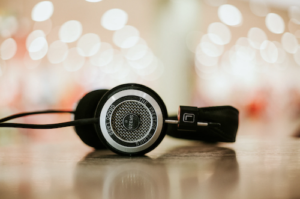Capturing Clean Audio: Essential Tips for Flawless Sound in Video Production
Audio is just as important in production as the video itself.
It is vital to keep it clean. Without clean audio, your audience will not be interested in watching the video. You want your narrative to be clear so the audience can follow along.
Audio is such an essential piece of your video production and of your shoot day, not to mention post-production.
Audio can be very easily overlooked, but as anyone who’s had this bad experience before can tell you, it can ruin an entire shoot day if you do not get clean audio.
For example, if the day you’re shooting, and the talent and video look great, but the lavalier mic is rustling against their clothing unbeknownst to you, it will be very hard to de-noise the clip in post-production.
De-noising a clip means digitally cleaning the audio so the bad signals are taken out and you’re left with the talent’s voice.
Although editing software can do a pretty good job at the basics of reducing noise, it can also make the audio sound robotic.
That is why it is important to make sure you have at least these three pieces on hand.
Table of Contents
Basic Audio Gear:
- Wireless lavalier Mic with clip
- Boom Mic (Shotgun)
- Headphones
These three basic tools will allow you to capture audio and monitor it while recording.
It is essential to always have two separate sources of audio running: a boom mic and a wireless lavalier.
Having these two sources allows you the flexibility to ensure you capture the audio, with different options to use during post-production.
The biggest mistake your crew could make is not wearing headphones to monitor the audio while shooting.
If you do not monitor the audio, it is very likely to become blown out or noisy. That is why it is vitally important to have one person continuously monitor the audio. This is where hiring a professional audio engineer could come in handy.
Hiring a Pro
Capturing good audio is hard. So leave it to the pros.
It is highly recommended that you hire an Audio Engineer, rather than having one person handle lights, shadows, hair, and audio. Having one person assigned to multiple tasks means that less focus is put on each one, which lowers the quality of production.
A professional Audio Engineer will be focused solely on capturing the audio. They also have the best equipment for the job.
Advanced Equipment
- Boom Mic
- Wireless Lavalier mic
- Sound Blankets
- Audio mixer
- Quality Headphones
Using a wireless lavalier mic is one of the best ways to capture close audio from the talent. One downside of lavalier mics is that they hide the mic, so it is out of the view of the camera.

However, hiding the mic is not easy. If you put it under clothing, there is a high possibility that the sound of it rubbing against the fabric will be picked up by the mic. That is where boom mics come in handy.
Boom mics are directional microphones that are pointed at the talent’s chest, held over the talent directly above the camera frame. The boom mic can be held by the audio engineer if the mic needs to be moved during the shot or by a C-stand if it’s stationary.
Using a boom mic is efficient because nothing is seen in the frame, and it can capture good, clean audio. The only downside to this is that if the mic is held close to the ceiling or ventilation, you could possibly hear the HVAC system or other room noise. A sound blanket is another tool that audio engineers use to mask out the sounds around them.
Sound blankets are made of an inner fiberglass core and a facing of vinyl or fire-proof foil. This material is made to block out noise from the surrounding environment.
Some blankets are even double-sided, with one side polyester and one side foil. This double-sided design allows noise to be bounced off or absorbed. Blankets can be held up by C-stands to drape next to the talent or even hung from the ceiling with gaffer tape.
Audio Engineer
Having an audio engineer comes in very handy when your shooting schedule is very tight. The reason for this is because it is their sole job to be listening to the video shoot the whole time. Their time is dedicated to capturing clean audio.
This is vitally important if you are shooting outside because there are way too many variables happening at once. You need someone who is listening for sirens, trucks, planes, etc.
You may not think that what you hear around you is captured on the mic, but in reality, it is picking up even more than your own ears can hear. Their job is to capture clean audio, no matter what.
Boston video production agency, Skillman Video Group’s, CEO and Creative Director, Christina Skillman, says that anytime she does an industrial shoot where there’s lots of large equipment being used, she always insists on bringing an audio engineer. It is just too important not to have one.
You do not want to have a video that gets ruined because the audio is useless. Take those extra steps to make sure you’re capturing the audio cleanly.
It’s the sound engineer’s job to capture clean audio and make sure that the talent sounds excellent! Having that crystal-clear audio is going to really help bring your video projects from good to great.
Share:
Search our blog:
Follow us on:

